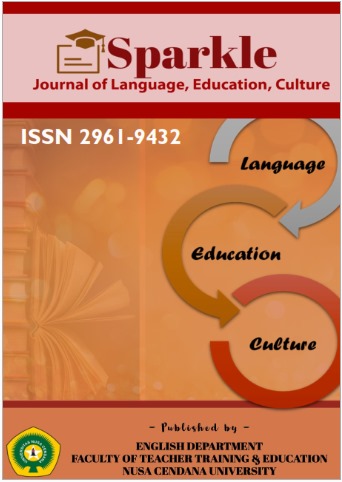Semiotic Analysis of Traditional Wedding Ceremony in Oelomin Village of Kupang Regency
Abstract
This research entitled “Semiotic Analysis of Traditional Wedding Ceremony in Oelomin Village of Kupang Regency” aims to answer several questions, namely: (1) What symbols are used in traditional wedding ceremony in Oelomin Village of Kupang Regency? (2) What are the meanings of the symbols used in the traditional wedding ceremony in Oelomin Village of Kupang Regency? This research aims to find out the meanings contained in the symbols in the traditional wedding ceremony in Oelomin Village of Kupang Regency. This research used descriptive qualitative method to analyze the data, and data collection through observation, video recording, picture taking, interview, and note taking. The result of this research shows that there are ten symbols in the traditional wedding ceremony in Oelomin Village of Kupang Regency. They are as follows: puah manus, oko mama, none, bijael, bete, tais, apilu, po’uk, apoho, and dulan. Each symbol in the traditional wedding ceremony in Oelomin Village of Kupang Regency means social status, culture indentity, respect, politeness, responsibility, openesess with community and family ties. By understanding the meanings of each symbol, it can increase knowledge about Timorese culture especially in Oelomin Village of Kupang Regency, as well as appreciation for the cultural heritage of the ancestors.

 Anita Baitanu(1)
Anita Baitanu(1)

